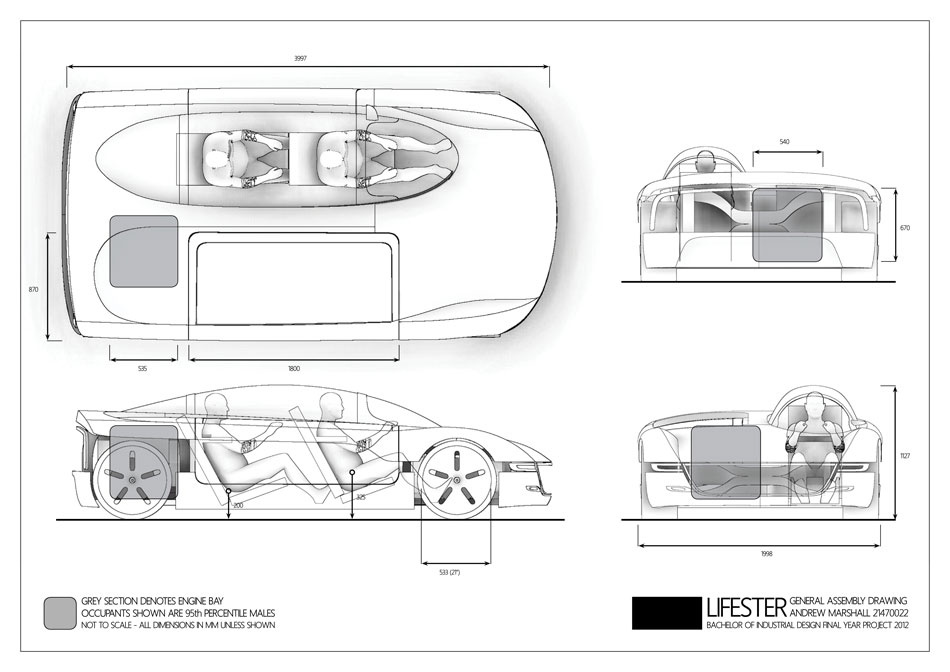The Thinker's Garage Pondering Automotive History, Design and Culture

Portfolio – Lifester
My honours project at university, Lifester was the outcome of imagining what a car would be like if it was primarily designed for weekend use.
Hand Sketch coloured in Photoshop
My aim for this project was to reconnect drivers with the unique environment of the open road. Frustrated by the constant use of modern technology to make motorists more isolated than ever from the simple pleasure of driving an involving car, I wanted to create a vehicle that immerses its occupants in the experience of the road. Inspired by lightweight, no compromise sports cars and the unique driving experience they provide, I wanted to develop a vehicle that encourages people to drive to the hills, or the coast, just for a the sake of it, while addressing some of the compromises traditionally involved with sports cars, such as compromised luggage space and cramped cockpits.
Autodesk Alias model, rendered in Keyshot
To improve both efficiency and the driving experience, a lightweight construction was a vital objective of the Lifester project. To enable this, the vehicle employs a plantation wood based spaceframe chassis construction which is then overlaid with the body panels, The rollover hoops are an aluminium extrusion. The car is designed to accommodate Fiat’s two cylinder turbocharged ‘Twinair’ engine, which is compact and lightweight (110kg for the engine and gearbox combination) but with a high specific output and low fuel consumption. The engine is mid mounted, and situated behind the luggage module with the gearbox alongside. Batteries were avoided due to their weight and issues with range anxiety. Compact external dimensions were also important – as a result, the Lifester is less than 4 metres long and just under 1200mm tall.
The most distinctive feature of the Lifester is the luggage module system which allows owners to easily adapt the car to their needs. All vehicles are supplied with the basic empty module, which provides a huge amount of luggage space. This can be unclipped and replaced however with specialised modules such as the bike and surfboard holders, which will be available to either rent or purchased outright from a dealership. The hard shell of the module is made from a polymer blend of ABS and Polycarbonate, much like a lot of hard sided suitcase luggage. This allows it to be light and strong while keeping costs reasonable. The unit can be easily fitted to the car with a two-person lift.
The Lifester offers tandem seating for two, which frees up the offside of the vehicle for the luggage module. The cockpit area offers space for two 95th percentile males, who are positioned as close to the ground as possible to enhance their sense of speed. There is a small luggage area behind the rear passenger for occasions when the luggage module is full, and the large glass canopy provides excellent sight lines and visibility all around while fully immersing the car’s occupants in their surroundings. Access is via a single, upward opening door on the nearside of the vehicle.
Autodesk Alias model, rendered in Keyshot
By combining the practicality of a ski box or SUV with the driving experience of a small sports car, the Lifester becomes the ultimate weekend toy for the keen driver and traveller, providing fun both on your journey and at your destination.
Above: 3D printed 20% scale model
Header Image: Autodesk Alias model, rendered in Keyshot and Photoshop
by Andrew Marshall




